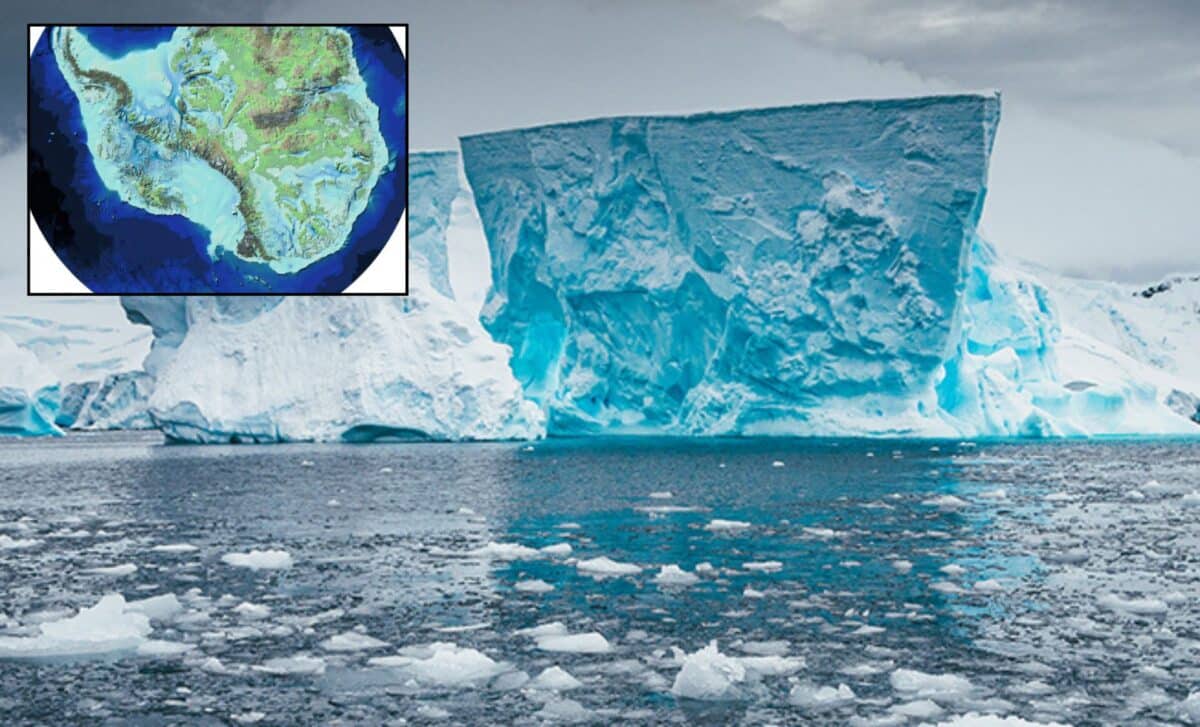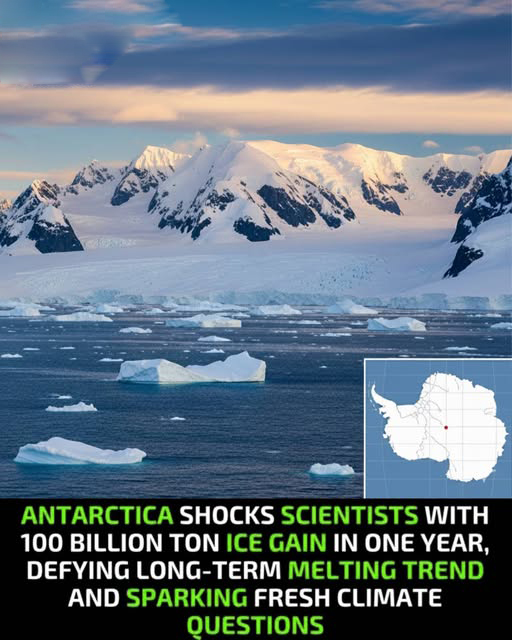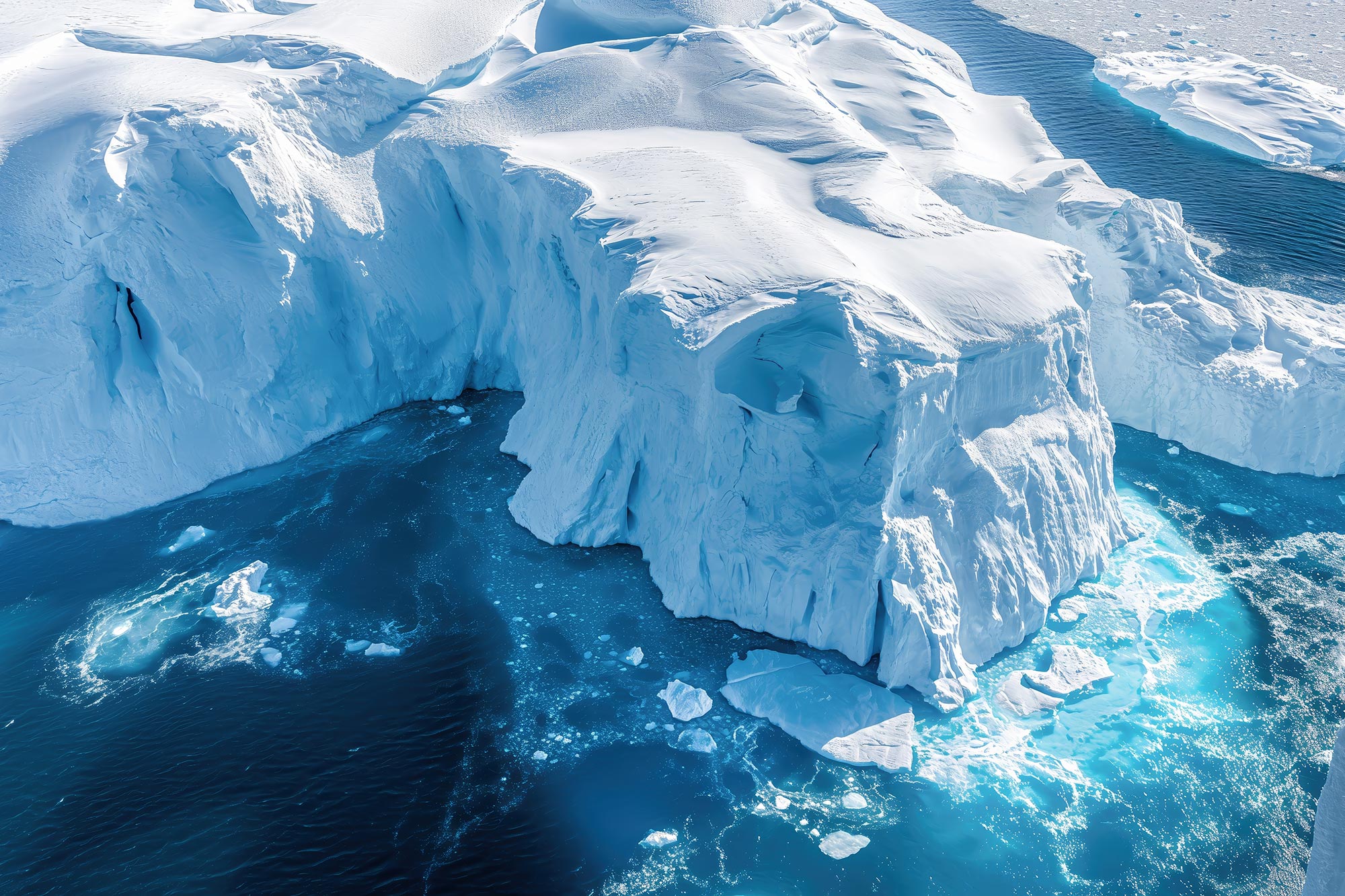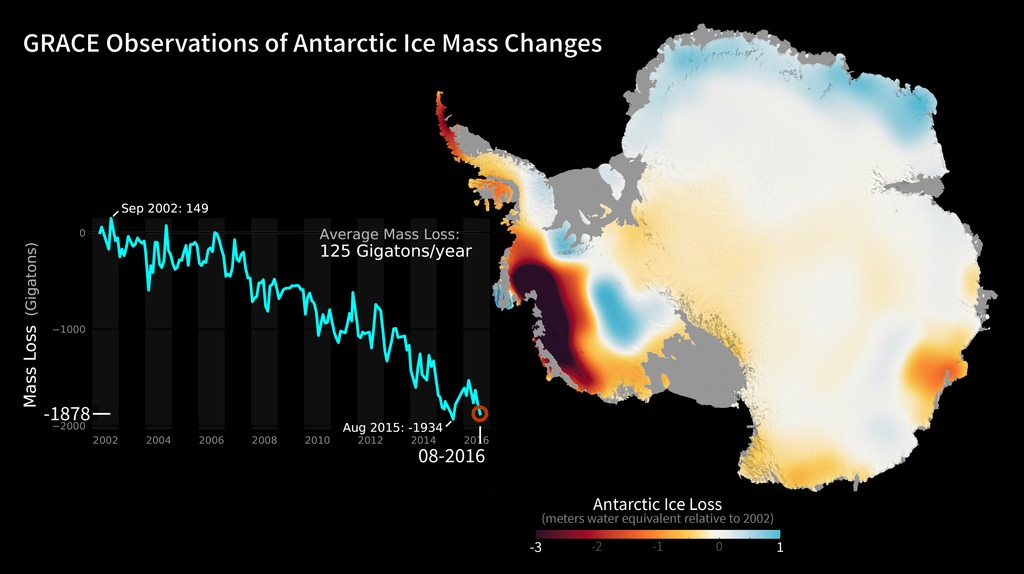Antarctica’s Surprise: 100 Billion Tons of Ice Gained in a Year

For decades, Antarctica has stood as the ultimate symbol of climate change—its collapsing ice shelves, retreating glaciers, and rising seas painting a sobering picture of a warming planet. Yet, in a surprising twist, scientists have confirmed that the frozen continent gained more than 100 billion tons of ice in a single year. The finding, backed by satellite observations and field studies, has sparked excitement, debate, and a renewed sense of scientific curiosity.
A Rare Reversal
This sudden surge stands in sharp contrast to the long-term trend of steady Antarctic ice loss. No one is suggesting that global warming has paused, but the event is a powerful reminder of how complex and unpredictable Earth’s climate system can be. Like an unexpected note in a familiar symphony, the gain underscores that natural variability still plays an important role in shaping polar regions.
How Did Scientists Measure the Gain?
Using precise satellite data combined with on-the-ground measurements, researchers tracked both ice thickness and snow accumulation. The increase was most pronounced across East Antarctica, historically considered the continent’s more stable side compared to the vulnerable West Antarctic ice sheet, which continues to melt at alarming rates.
While Antarctica has shown occasional growth spurts before, the sheer scale of this year’s gain—hundreds of billions of tons—makes it one of the most significant ice rebounds on record.
What Caused the Ice Boost?
Researchers are still untangling the details, but three natural forces seem to have converged:
Heavier Snowfall – A series of large storms dumped massive amounts of snow, which compacted into ice.
Colder Ocean Temperatures – Cooler waters in parts of the Southern Ocean slowed melting from below.
Shifting Winds – Atmospheric changes trapped cold air over Antarctica, shielding coastal ice from warmer currents.
Together, these factors created what scientists call a “temporary ice boost”—a momentary gain against the backdrop of long-term decline.
Does This Mean Climate Change Is Slowing?
The answer is no. Experts caution that this anomaly doesn’t rewrite the bigger picture. Antarctica, especially West Antarctica and the Antarctic Peninsula, continues to shed ice at an accelerating pace. These losses are still a major driver of global sea level rise.
“Earth’s climate system is alive and constantly shifting,” one researcher explained. “Events like this remind us that short-term surprises can happen. But the long-term trajectory—warming and ice loss—remains unchanged.”
Why This Discovery Matters
The Antarctic ice gain is more than just a scientific curiosity:
For researchers, it provides a rare chance to study how natural variability interacts with human-driven climate change.
For the public, it highlights the importance of avoiding oversimplified narratives. Climate change is not a straight line—it is a complex, dynamic process full of surprises.
For policymakers, it reinforces the need for long-term vision. Temporary reprieves do not erase the underlying risks of rising seas, extreme weather, and ecosystem disruption.
A Lesson in Complexity and Hope
In a world dominated by bleak headlines about melting glaciers and disappearing coastlines, Antarctica’s ice gain feels almost like a breath of fresh air. It is not proof that the climate crisis has been solved. But it is proof that nature remains dynamic, resilient, and full of surprises.
For scientists, the challenge is to learn from this moment. For the rest of us, it is a reminder to stay curious, engaged, and humble before the vast complexity of the natural world.
Because in the end, whether Antarctica gains or loses ice in a given year, the larger story of climate change is still being written—and we are all part of it.











